Physiotherapy
It promote, maintain and restore health through examination, diagnoses & management. Patanjali physiotherapy offers natural and practical healing techniques that blend traditional wisdom with modern machines. It focuses on easing pain, improving movement, and helping the body heal on its own / It’s safe and commonly used for pain, inflammation, healing, strenghtening in muscles, bones and nerve-related problems. Many people choose this method to treat long-term pain or recover from injuries without side effects.
It had two parts:-
- 1. ELECTROTHERAPY THERAPY
- 2. EXERCISES THERAPY
Both therapies are part of wellness physiotherapy, which supports the body’s overall health, strength, and daily function. These methods are widely used in hospitals, clinics, and even at home under expert guidance.
(1) ELECTROTHERAPY:
The application of an electric current to the affected area of the body to accelerate healing and reduce swelling and pain, inflammation, nerve and stimulation.In electrotherapy, machines are used to send gentle electrical signals to the body. These signals help in reducing pain, improving blood flow, and repairing tissues.
MACHINES REFER TO ADMINISTRATION OF
- 1. Thermal/ heat/cold
- 2. Mechanical currents
- 3. Electromagnetic rays
- 4. Light energies
A.MECHANICAL CURRENTS MACHINES
- 1. TENS (Transcutaneous Electrical nerve stimulations) Low-frequency electric current, application-2p or 4pole
- 2. IFT (interferential Current therapy)
Two medium frequency meet to form 1low frequency current, application- 2p or 4pole - 3. Muscle Stimulator (MS)
- 4. Wireless (combine therapies)
- 5. Combo (IFT+TENS+MS+US)
B. THERMAL MODALITIES-
- 1. Infrared therapy (IRR)
- 2. Short wave diathermy (SWD) (Electromagnetic radiation)
- 3. Hydro collateral Therapy (Hot pack) Duration :
- 4. Wax therapy
- 5. Cryotherapy/COLD PACK
C. NON-THERMAL / RAYS MACHINES -
- 1. Ultrasound Therapy (US)
- 2. LASER-Light Amplification by stimulated Emission radiation
D. TRACTION -
- 1. Cervical (1/10th of body weight)
- 2. Lumbar (1/2 of the body weight)
Wax therapy is a form of deep heat therapy which is the most effective way of applying heat to improve mobility by warming the connective tissues.
Wax Therapy involves the application of molten paraffin wax, to the connecting tissues causing muscle relaxation and improves joint mobility.
-
It is an ideal therapy that helps in:
- Relieving pain
- Decreases joint stiffness
- Helps in increasing the blood flow
- Dereases muscle spasms
- Decreases inflammation
-
It is used to treat the conditions like:
- Osteoarthritis
- Rheumatoid Arthritis
- Fibromyalgia
- Joint Mobility issues
- Scleroderma
- Raynaud's or any rheumatic pains
-
Do not opt wax therapy if you are suffering from:
- Diabetes
- Skin rashes
- Wounds
- Cuts
- Open Sores
Numbness in your hands or feet
ULTRASOUND THERAPY:
This therapy involves the application of Ultrasound waves above that of the range of human hearing in order to treat various types of injuries.This ultrasound therapy treatment is painless and helps speed up healing in soft tissues, muscles, and joints.
Thermal ultrasound:
This therapy involves the continuous transfer of sound waves resulting in small vibrations in the deep tissue molecules. It is generally used in case of a Myofascial pain, or a muscle strain or sprain, scars, or adhesion.
Mechanical ultrasound:
This therapy uses single the vibration of sound waves to penetrate tissue. It is generally used if you have Pain and Swelling such as with Carpal Tunnel Syndrome,
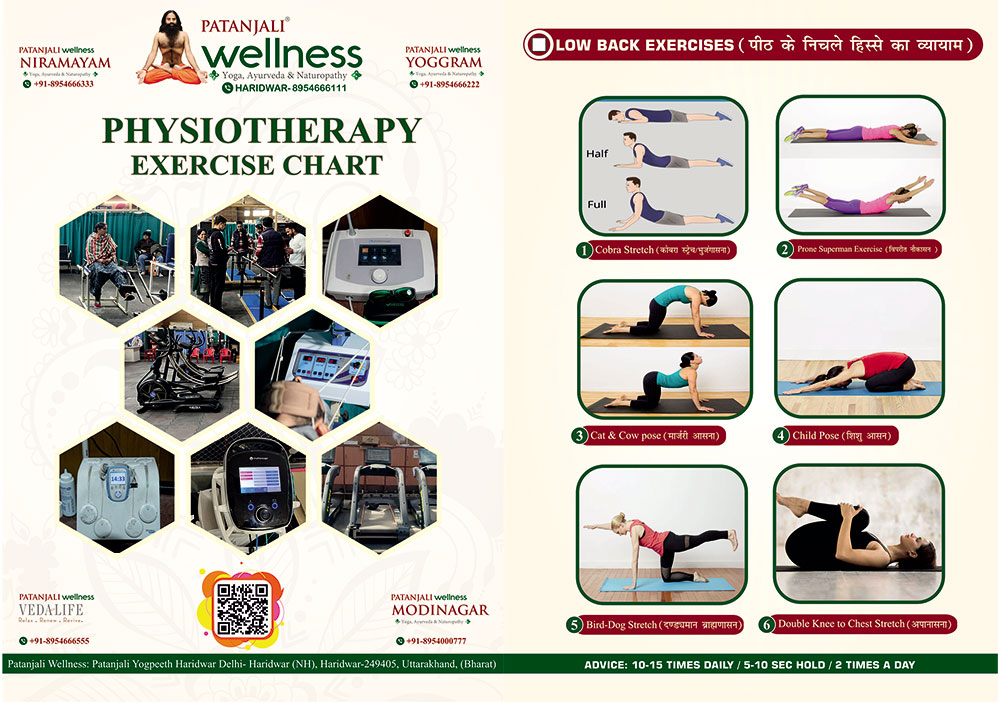
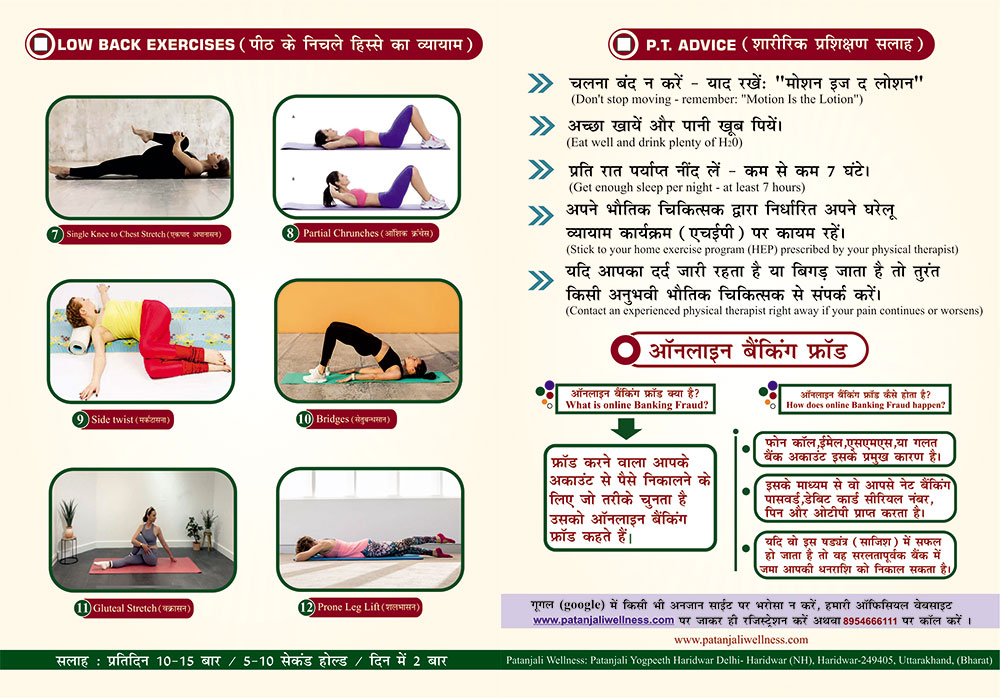
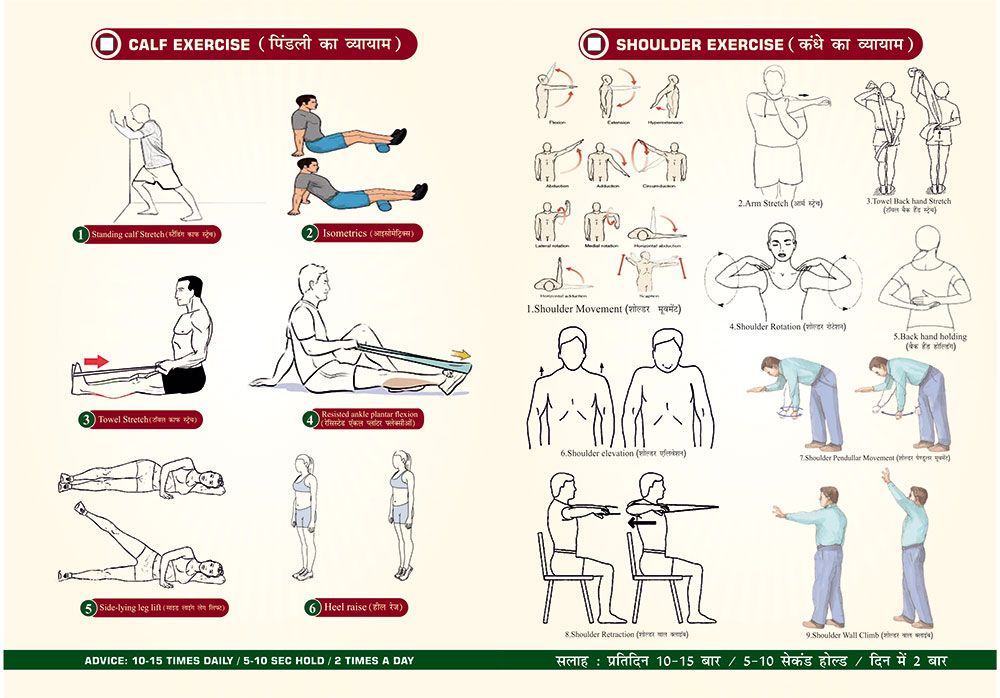
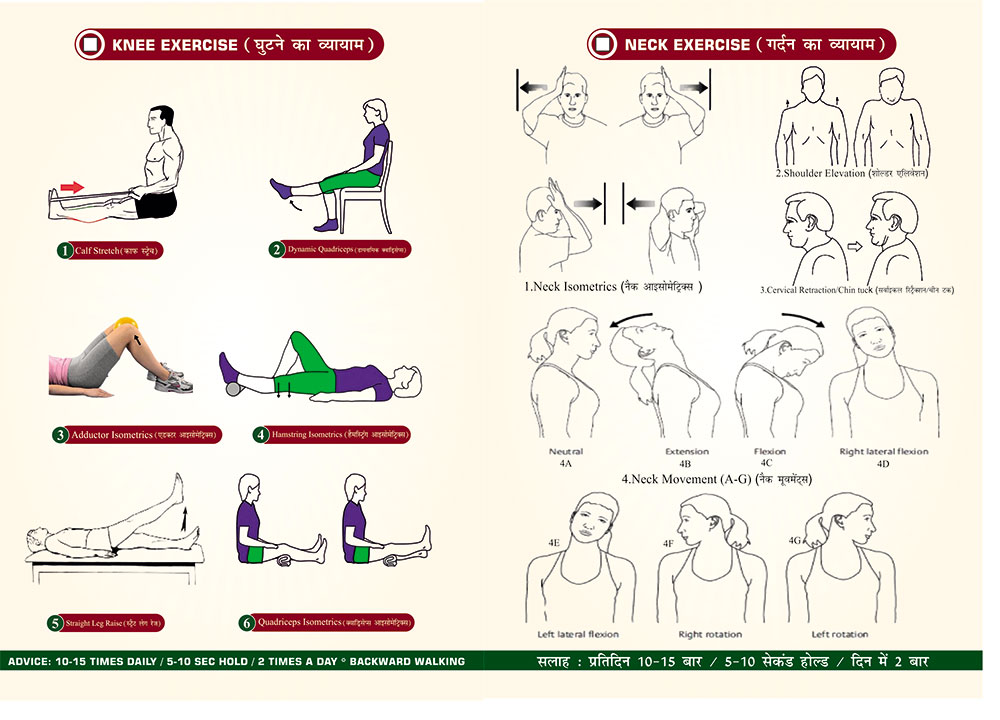
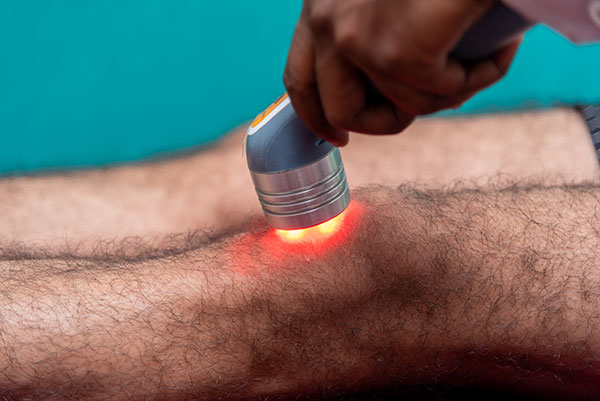
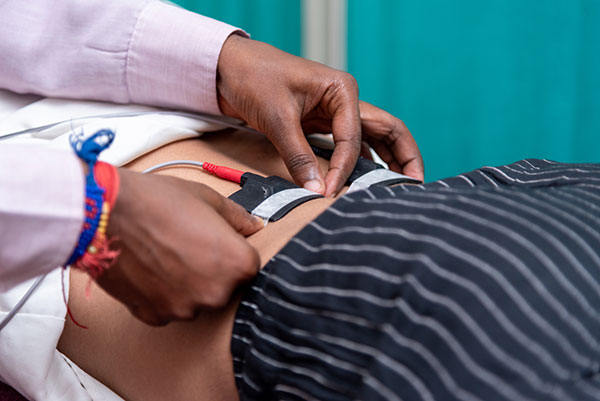
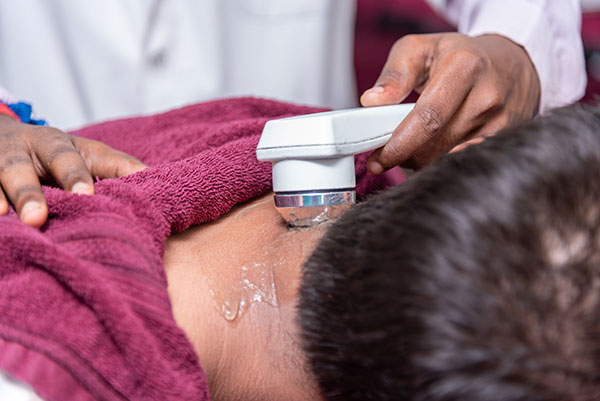
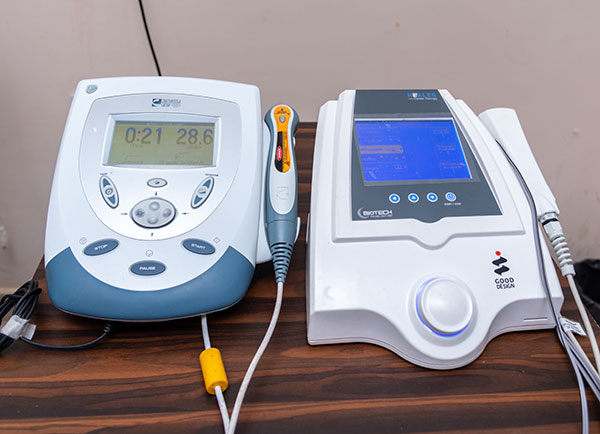
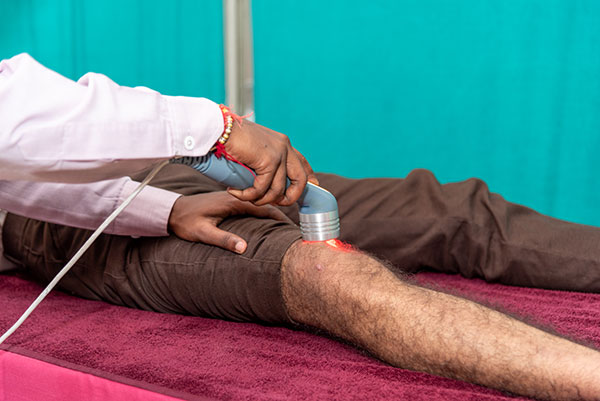
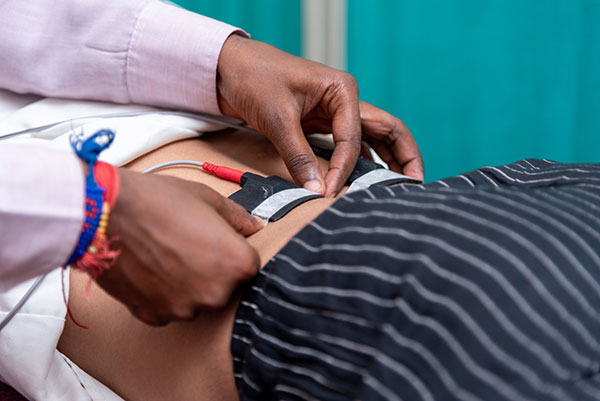
-
Suggested Frequencies-
- 1MHz, continuous mode with intensity at 1 – 1.5 W/ cm squared
- The aim is to produce a thermal effect for vasodilation and increased tissue oxygen levels
- 3MHz with intensity at 0.3-0.5 W/cm squared
- The aim is to stimulate protein synthesis and increase cell proliferation
Dermal Wounds – 3MHz
Deep lacerations or Periwound Skin – 1Mhz
Parameters
-
Indication:
- Osteoarthritis
- Myofascial pain syndrome
- Bursitis
- Carpal tunnel syndrome
- Pain caused by scar tissue
- Phantom limb pain
- Sprains and strains
While ultrasound therapy is not effective for all chronic pain conditions, it may help reduce your pain if you have any of the following:
-
Contraindication:
- Over the abdomen, pelvic regions, or lower back in women who are menstruating or pregnant
- Over lesions, broken skin, or healing fractures
- Around the eyes, breasts, or sexual organs
- Over any areas with plastic implants
- Over or near areas with malignant tumors
- Over areas with impaired sensations or blood flow
Ultrasound therapy should not be used on these body parts:
TENS (Transcutaneous Electrical Nerve Stimulation)
A transcutaneous electrical nerve stimulation (TENS) unit is a device that sends small electrical currents to targeted body parts. These currents are used to relieve pain.
A TENS unit sends electrical pulses through the skin. These pulses control pain signals in the body, creating temporary or permanent relief from pain. They can control abnormally excited nerves and release endorphins.
A single treatment typically lasts 15 to 40 minutes. It’s not painful, but you might feel a slight tingling or warming sensation where the electrodes meet your skin.
-
TENS machines may relieve pain caused by many conditions, including:
- Arthritis
- Fibromyalgia
- Headaches and migraines
- Nerve pain
- Sports injuries
- Surgery
- Wounds and incisions
IFT (Interferential Therapy)
IFT which stands for Interferential Therapy is one of the types of electrotherapy used for the management of pain. The principle of interferential therapy is to cause two medium frequency currents of slightly different frequencies to interfere with one another. Interferential current therapy works by sending small amounts of electrical stimulation to damaged tissues in the body. The therapy is meant to boost the body's natural process of responding to pain, by increasing circulation thus produces hormones that promote healing. IFT delivers intermittent pulses to stimulate surface nerves and block the pain signal, by delivering continuous deep stimulation into the affected tissue. IFT relieves pain, increases circulation, decreases edema, and stimulates the muscles.
-
Pain Relief in conditions such as :
- Causalgia
- herpes zoster
- neuralgia
- Cervical spondylosis
- Osteoarthritis of the knee
- Ankylosing spondylitis
- Rheumatoid arthritis
- Frozen shoulder
- Disc herniation
- Spinal canal stenosis
SWD (Short Wave Diathermy)
Short Wave Diathermy (SWD) is a treatment that uses electromagnetic energy to produce deep heating in joints and soft tissues. This form of heat can be applied to deeper structures than other forms of heat treatment. Thus SWD can effectively relieve joint pain, improve soft tissue healing and decrease the symptoms of osteoarthritis. Best Health Physiotherapists are knowledgeable and experienced in the appropriate application of SWD.
What makes short wave diathermy different from other heating agents? How it produces heating in deeper tissues? One of the most important differences is its ability to heat deeper tissues of our body.
The heating of the tissues is the result of high-frequency alternating current which generally have a frequency 27.12 MHz and a wavelength of 11 meters. Currents of such high frequencies do not stimulate motor or sensory nerves nor do they produce any muscle contraction.
-
SWD is very effective in relieving pain, helps in the reduction of inflammation
- backache
- Knee pain due to arthritis
- Frozen shoulder
- Bursitis, capsulitis
- Osteomyelitis
- strain, sprain
- Brachial plexus neuritis
- Fibrositis, myositis
- Rheumatism, etc
Cryotheraphy
Cryotherapy, also known as ice application, is the simplest and oldest way to treat injuries. Ice is believed to control pain by instigating local anaesthesia.It also decreases oedema, nerve conduction velocities, cellular metabolism and local blood flow.
Exercise Therapy
Exercise therapy is defined as a regimen or plan of physical activities designed and prescribed to facilitate the patients to recover from diseases and any conditions, which disturb their movement and activity of daily life or maintain a state of well‐being through neuro re‐education, gait training, and therapeutic activities.
Uses mechanical & manual techniques for treatment purpose with tools/equipments.
Many people use exercise therapy not just for recovery, but also to stay fit and avoid future health issues. It is a key part of wellness physiotherapy, focusing on body movement, flexibility, and balance.
-
It is systemic execution of planned physical movements, postures, or activities intended to enable the patients to
- Reduce risk,
- enhance function
- remediate or prevent impairment
- optimize overall health
- improve fitness and well‐being
Exercise therapy can be called Activity‐Based Therapy, Activity‐Based Recovery Therapy, Neuro‐based Therapy, and Restorative Therapy
- Promote activity and minimize the effects of inactivity, increased independence
- Increase the normal range of motion
- Improve strength the weak muscles
- Improve the performance in daily activities
- Enable ambulation
- Release contracted muscles, tendons, and fascia
- Improve circulation
- Improve respiratory capacity
- Improve coordination
- Reduce rigidity
- Improve balance
- Promote relaxation
- Increased motor or sensory function
- Reduction of medication, reduction of hospital visits, and increased overall health
The most important goal of exercise therapy is an optimal level of physical fitness by the end of the intervention. The physical fitness a state characterized by good muscle strength combined with good endurance.
